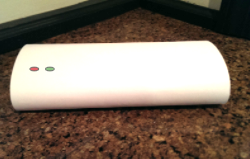Hand Hygiene in Hospitals
Problem
100,000 people die from hospital associated infections (HAIs) per year, three times the number as gun violence.
HAIs are caused by improper infection control, especially not performing hand hygiene. Compliance to hand hygiene in hospitals is usually at 50%, causing death, illness, and higher costs.
Approach
There is a need to solve this issue with a designer's approach. Observations, ethnographies, literature review, and bench research were used to gather data. Then using design methodologies, prototypes were developed and tested.
Research
- Hand Hygiene: History, Acceptance, and Compliance
- Observations in Hospital of the University Pennsylvania MICU
- Barriers to Hand Hygiene Compliance in Hospitals: A Human Factors and Sociological Approach
- Understanding Reasoning Behind Hand Hygiene Compliance and Noncompliance in the Health Care Setting in Order to Improve Compliance Rates
- Hand Hygiene Compliance User Experience and Human Factors at Hospital University of Pennsylvania
- Water Temperature's Affect on Bacterial Removal During Hand Hygiene
- Comparing CDC vs. WHO Hand Hygiene Protocols
Prototypes
Two prototypes were developed to encourage healthcare workers to wash their hands.
Washing Indicator Light
This prototype is used to inform healthcare workers when to wash their hands and for how long. It lights up green when it is time to wash and turns to red when a user is finished.
Automatic Sink
This second device is a prototype sink that automatically times water, soaping, lather, and wash according to protocol. It is integrated into a hospital's tracking system and will track when a doctor or nurse needs to wash their hands. When procedure completed, a doctor or nurse approaches sink and scans transponder. The sink wets their hands and then dispenses soap and allows physician to lather for 20 seconds. Then the water turns on again and washes away soap. Transponder beeps if health care worker leaves room without washing.
User Testing
A user demonstrates washing without the automatic sink.
A user demonstrates washing with the automatic sink.
Prototypes were tested with diverse users who were training to be healthcare workers as well as general population. Users were instructed to compare washes and demonstrate use with lights. Feedback gathered showed that users were more likely to wash their hands following the proper procedure.
solution
There are no products on the market currently that work well with healthcare worker's workflow. More research must be done in this space in order to further develop and test concepts so that they can best fit all the stakeholders' needs.
Key Takeaways
Healthcare workers have low compliance to hand hygiene
Most healthcare spaces are not designed for ease of hygiene
- Hygiene protocols not designed ergonomically
I am looking forward to continue to problem solve for proper hand hygiene.
Sources
http://www.jointcommissioninternational.org/assets/1/14/PPICP09-SamplePages.pdf
https://everytownresearch.org/gun-violence-by-the-numbers/








